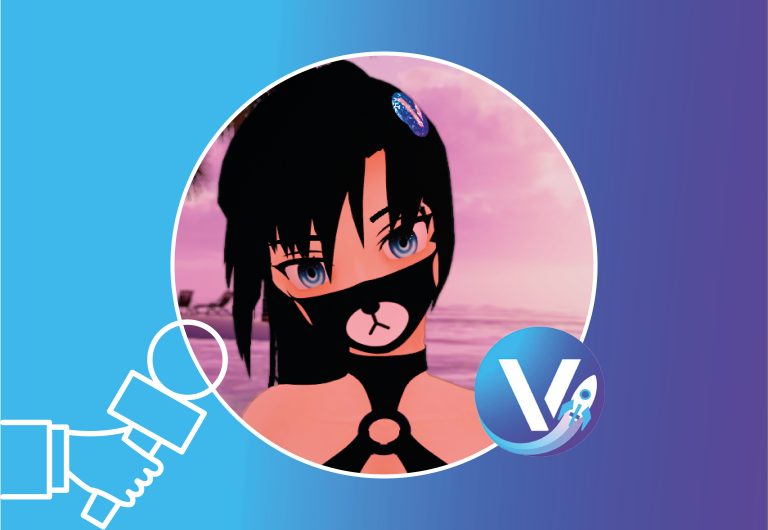Vircadia Pushes Open Source Ahead in the Metaverse

VR, AR, and virtual worlds have been a major focus of the computer industry for some time, spawning many expensive devices and a spike of interest in the early 2000 decade for the Second Life virtual world. Improvements in visual effects and other parts of the technology over the past few years suggest that VR/AR is indeed ready for a breakthrough.
When the Linux Professional Institute learned of Vircadia, a free and open source metaverse project, the institute knew it had to get on board. Vircadia creates a platform for virtual worlds, which major companies such as Microsoft and Facebook (now Meta) are treating as a crucial next stage in user experience.
But if VR/AR remains proprietary, its progress will be stunted and software that holds the end user’s experience with the utmost priority will be lacking. Thus the Vircadia project was born. In this interview, Andy Oram asks Kalila Lakeworth, the founder and leader of the project, about the history and progress of Vircadia.
How does the VR experience on the web differ from the experience on a dedicated device, besides some loss of an immersive experience? Does Vircadia work similarly in both environments?
To begin, the web experience will be quite basic but interactive. WebGPU can potentially enable more sophisticated graphics processing, speed up response time, and open up 3D graphics possibilities by giving browser-based applications access to GPUs. As development progresses and features like WebGPU mature, I expect we’ll be able to bring the web and native experiences to feature parity.
How much background does a user need to create or alter a world in Vircadia?
It all depends on the complexity and detail of the world desired. The world creation UI is probably familiar to world builders coming from existing social virtual platforms. We are working to build out a marketplace of content to ease the burden. However, for a truly bespoke world, having expertise in scripting and modeling will be most valuable.
Was it hard to find contributors for Vircadia? How did you promote the project, do outreach, and motivate contributors?
Very difficult, as is the problem that faces most open source projects I’m sure. Promotion generally was only by word of mouth but I found that to be insufficient. Fighting against the control of large corporations and their governments in virtual worlds is a hot topic thanks to the industry’s explosive growth, fueled in part by Meta. One strategy that has worked well has been to approach tinkerer and developer-oriented communities such as the one surrounding Linux.
How did your project come to the attention of LPI, and how did their support help you? Was the support just financial, or did it include stuff such as publicity and organizational support?
After one of Vircadia’s first major public announcements on Reddit, LPI got in touch with us. LPI offered to partner up and assist with publicity and grants. We are always looking for ways to expand accessibility for open source virtual worlds, so when LPI approved our request for a grant to build the infrastructure needed to enable web support, we were very glad. LPI being a rather large organization, things were much easier than I had expected they would be.
What other organizations provided support?
We’ve worked and are working with many organizations to build and maintain virtual worlds powered by Vircadia. For example, we’ve put on art exhibitions for non-profits, created commercial worlds for prototype simulation and showcase, and built and hosted startup conferences in collaboration with the Taiwanese, Japanese, and Indian governments; I could go on forever, but to be brief, organizations and companies of every type are finding Vircadia and we receive support to help make it work for their needs.
What is “metaverse” and where does Vircadia fit within it?
Metaverse has fast become a buzzword to toss around, but even prior to that people had always misunderstood what metaverse is and what it isn’t. Metaverse is defined as being a virtual world, but to me it’s much bigger than a single world, or even a set of worlds. Take for example the “internet”—it’s an all-encompassing concept of a wider abstract network of things. As such, I think “metaverse” is the same concept, except with virtual worlds. In my opinion, metaverse is the culmination of all virtual worlds built on top of the network, in this case the internet.
Vircadia is part of the infrastructure layer for metaverse. We aren’t trying to build VRChat or Horizon. We want to be the middleware that goes into those platforms, but also games and experiences as well. Vircadia’s scalable infrastructure provides everything from simulation to economies for virtual worlds and is ripe to support the inevitable metaverse filled with millions of worlds.
Who thought up this project, and when? Did it go through various stages and transformations, as many projects do?
The history of Vircadia can be traced all the way back to the early 2000’s. Philip Rosedale originally created Second Life, which was and still is quite popular. Afterwards, he went on to found High Fidelity. The platform was built with some cutting edge technology, but it had its ups and downs and ultimately was abandoned in December of 2019. It was at that point that I had decided to take my own build and adopt the project in its entirety; thus Vircadia was born. Now, to get to where we are today, we’ve gone through a lot of rough patches. Nothing about this has been easy, nor do I expect it to be as we push farther to grow Vircadia’s ecosystem.
Can you briefly compare Vircadia to Meta’s Metaverse?
Vircadia is an open source metaverse ecosystem; Meta’s ecosystem is proprietary. We want to empower the creation of not thousands, but millions of independent virtual worlds. More worlds means more competition and thus more niches fulfilled and a higher standard of quality across the board. We are laying the FLOSS foundation to enable freedom of choice for every user in the metaverse and we are able to do it with the support of friends like LPI.
About Kalila Lakeworth:
Kalila is the Founder and Project Lead for the open source metaverse ecosystem, Vircadia. Her main pursuit is in helping people live their best lives by ensuring freedom of choice for virtual worlds.
